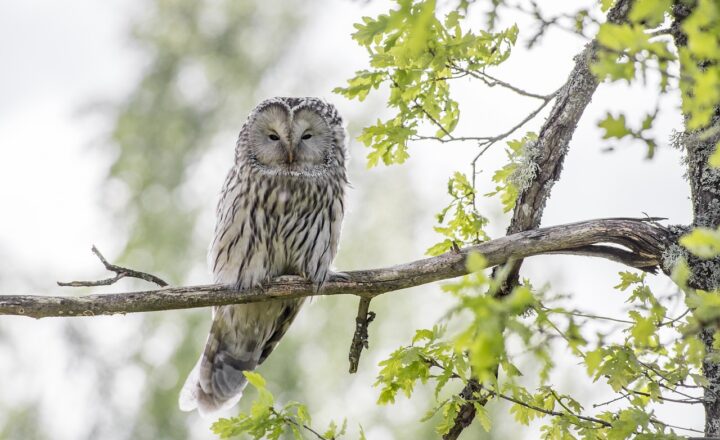How the Patterns in Animal Behavior Have Inspired Human Innovation in Design and Technology
November 17, 2024

Nature has always been a fertile ground for inspiration, offering a wide array of solutions to complex problems. One of the most fascinating aspects of this relationship is how animal behavior influences human innovation in design and technology. From architectural marvels that mimic natural structures to technological advancements that emulate biological functions, the patterns observed in the animal kingdom have driven numerous innovations over the years. This article explores the profound impact of animal behavior on human creativity, providing insights into how we can continue to learn from the natural world.
1. The Concept of Biomimicry
Biomimicry is a design paradigm that seeks sustainable solutions by emulating nature’s time-tested patterns and strategies. Rather than looking to traditional engineering or architectural concepts, biomimicry encourages innovators to study biological entities that have successfully adapted to their environments. This approach can lead to designs that are efficient, sustainable, and more attuned to the needs of both humans and ecosystems.
For instance, the way termites construct their mounds, which maintain stable temperatures using natural ventilation systems, has inspired architects to create buildings that use less energy for heating and cooling. The concept of taking cues from animal behavior promotes a deep understanding of natural systems and how they can improve human innovation.
2. Flight Inspired by Birds: The Evolution of Aviation
The evolution of flight is one of the clearest examples of how animal behavior has shaped human technology. The Wright brothers analyzed the wings of birds and their mechanics to develop the first successful airplane. They studied the way birds maneuvered through the air, understanding the principles behind lift and drag.
Modern advancements in aviation continue to apply these principles. Engineers use the study of bird flight patterns to enhance aircraft design, improve fuel efficiency, and increase safety. Technologies such as winglets and advanced wing designs replicate the dynamic adjustments birds make during flight, emphasizing that nature’s prototypes can offer solutions that are beyond human imagination.
3. Underwater Explorations: Nature’s Engineers
Marine animals demonstrate some of the most sophisticated adaptations to their environments, inspiring advancements in underwater technology. The streamlined bodies of dolphins and fish reduce drag in water, which has influenced the design of submarines and aquatic vehicles.
For instance, the shape of a dolphin’s body has inspired the design of faster and more efficient boats. Similarly, the study of manta rays has led to innovations in unmanned underwater vehicles (UUVs) that mimic the creatures’ wing-like motions, resulting in quieter and more efficient underwater explorations. Animal behaviors in aquatic environments thus not only enhance human technology but also offer insights into sustainable practices that can be integrated into marine engineering.
4. Architectural Inspiration: Structures Inspired by Animals
The influence of animal architecture on human buildings is another fascinating aspect of this relationship. Animals such as beavers and birds have developed intricate structures that serve as excellent case studies for architects and designers.
For example, the designs of termite mounds have prompted the creation of buildings that enhance natural ventilation. The National Academy of Sciences building in Washington, D.C., was inspired by the cooling systems of termite mounds, leading to increased energy efficiency in a traditionally high-energy-consuming structure. Similarly, the hexagonal structures of honeycombs have inspired energy-efficient building designs that optimize space while minimizing material usage.
5. Learning from Social Animals: Cooperative and Social Technologies
Animal behavior also provides valuable insights into the dynamics of teamwork and cooperation. Social animals, such as ants, bees, and wolves, have developed sophisticated communication systems and collaborative behaviors to enhance their survival.
Technologies that rely on collaboration, such as cloud computing and social media platforms, are increasingly mirroring these patterns of social interaction. For instance, the way ant colonies divide labor and communicate regarding resource distribution has been mimicked in algorithms that optimize task assignments in organizations and networks.
By understanding how social species function, we can design better communication technologies and systems that enhance teamwork and productivity in human contexts.
6. Future Innovations: The Next Frontier of Animal-Inspired Design
Looking ahead, the potential for innovations inspired by animal behavior is boundless. As we face new challenges such as climate change, resource scarcity, and urbanization, the wisdom gathered from the animal kingdom offers a wealth of ideas and opportunities for sustainable solutions.
Researchers and designers are investigating how animal migration patterns can inform energy-efficient transportation networks and urban planning. Furthermore, studying how animals camouflage themselves could lead to advanced materials in fashion and security industries. The integration of biological principles will enable future technologies to be not just innovative but also harmonious with the environment.
Conclusion
The patterns in animal behavior are a testament to nature’s ingenious solutions and a source of inspiration for human innovation. As we continue to study and learn from these natural designs, integrating insights from the animal kingdom into our technological and creative endeavors will not only advance industries but also promote sustainability.
Utilizing biomimicry, observing flight mechanics, exploring underwater adaptations, and embracing social behaviors from the natural world allows us to rethink our approach to problem-solving. By fostering a deeper respect for nature and its creatures, humans can unlock the potential for groundbreaking technologies that honor our interconnectedness with the environment.
Through continued exploration and experimentation, we can pave the way for a future where design and technology are not just products of human intellect, but also reflections of nature’s incredible wisdom and adaptability.








